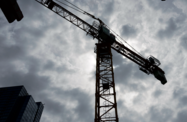Long a key component of the Philippines’ economy, the construction industry is earmarked for strong growth next year, as the country moves to roll out new infrastructure, address its housing shortage, and to begin rebuilding the areas hit hardest by Typhoon Haiyan.
As talks get under way on the subject of reconstruction, the government will be all too aware of the part that unsuitable material used to build homes played in exacerbating the storm’s damage. However, with affordable, durable housing in short supply, even before the disaster, investment in new builds will be critical over the coming years.
Projects driving growth
The construction industry is currently enjoying double-digit growth, and, according to the Philippine Contractors Association (PCA), will likely be responsible for almost half of economic expansion in 2014.
PCA president, Augusto Manalo, told visitors at the international trade show, Philconstruct, which took place in Manila this November, that construction projects in 2014 were set to total PHP400bn ($9.17bn), topping projections for 2013 of PHP380bn ($8.71bn). Manalo added the value of work in the construction sector reached PHP287bn ($6.58bn) for the first six months of 2013, up 23.7% on the same period last year.
The rise in construction activity has, in turn, boosted the cement industry. According to data from the Cement Manufacturers Association of the Philippines (CeMAP), while sales eased during the typically slow, wet third quarter, figures were still up in a year-on-year (y-o-y) comparison.
CeMAP president, Ernesto Ordonez, announced in October that the group’s six members sold a combined 4.8m tonnes of cement between July and September, marking a rise of 9.2% on the same period last year. The figures come on the back of an impressive year for the cement industry, during which it notched up the fastest sales growth since 1997. Producers moved a record 18.4m tonnes of cement in 2012, up 17.5% on sales for 2011.
Foreign interest on the rise
Strong demand and steady construction growth within the Philippines has prompted outside investors, such as Thailand’s Siam Cement Group (SCG), to consider expanding their local capacity. The firm announced in October 2013 that it was mulling the idea of opening a pulpwood plantation and fibre cement board factory in the Philippines.
Steel is also witnessing substantial growth, with Trade Undersecretary, Adrian Cristobal Jr, reporting a 50% increase in demand over the past two years.
The expansion comes as industry representatives, including Gregory Uy Chan, president of Sanyoseiki Stainless Steel, continue lobbying both the government and the private sector to use steel in new building construction. Industry stakeholders argue that despite higher input costs, steel’s advantages, particularly its durability, make it a worthy long-term investment.
Their views were echoed by Japanese Ambassador, Toshinao Urabe, who called on the Philippines, in a July speech, to use more steel in construction projects. The government is currently mulling the idea of introducing a tax on steel imports as a means of supporting the local industry.
Reconstruction a priority
Maintaining a healthy supply of construction materials takes on added importance in the aftermath of Typhoon Haiyan. Estimates suggest that between 7m and 11m people have been affected by the deadly storm, with some 600,000 made homeless and at least 3900 killed. The typhoon is thought to have caused around $15bn of damage, pushing down Q4 growth from 7.1% to 4.1% y-o-y.
Experts such as Brian McNoldy, a hurricane researcher at the University of Miami, have highlighted the part that poorly constructed homes played in the devastation. According to figures from the World Bank, almost half of the country’s population were living in vulnerable, storm-prone cities numbering over 100,000 inhabitants last year. The country’s census office reported that one third of homes in Tacloban City had wooden exterior walls, while some even had grass roofs.
Addressing shortages
The Philippines already faces the challenge of addressing a housing shortfall of around 3.9m units. With estimates suggesting the shortage could rise to 10.21m by 2030, increasing access to affordable housing will be a government priority in the coming years.
In a move which was seen as highlighting the key role earmarked for local industry in tackling the housing shortage, the Aquino administration recently released a draft road map for each of the construction, steel and cement sectors, opening all three documents up for public consultation.
Stakeholders have already responded with their suggestions, which include calls for stricter enforcements of cement quality standards, elimination of double taxation and fiscal incentives for both existing companies and new players.
The president of the Subdivision and Housing Developers Association, Paul Tanchi, also called for the housing industry to team up with developers and industry partners with the aim of constructing 1m homes by 2016. Demand will undoubtedly remain strong in the medium term, putting contractors and foreign investors in a strong position as the building and rebuilding of infrastructure gains pace.
Follow Oxford Business Group on Facebook, Google+ and Twitter for all the latest Economic News Updates. Or register to receive updates via email.

